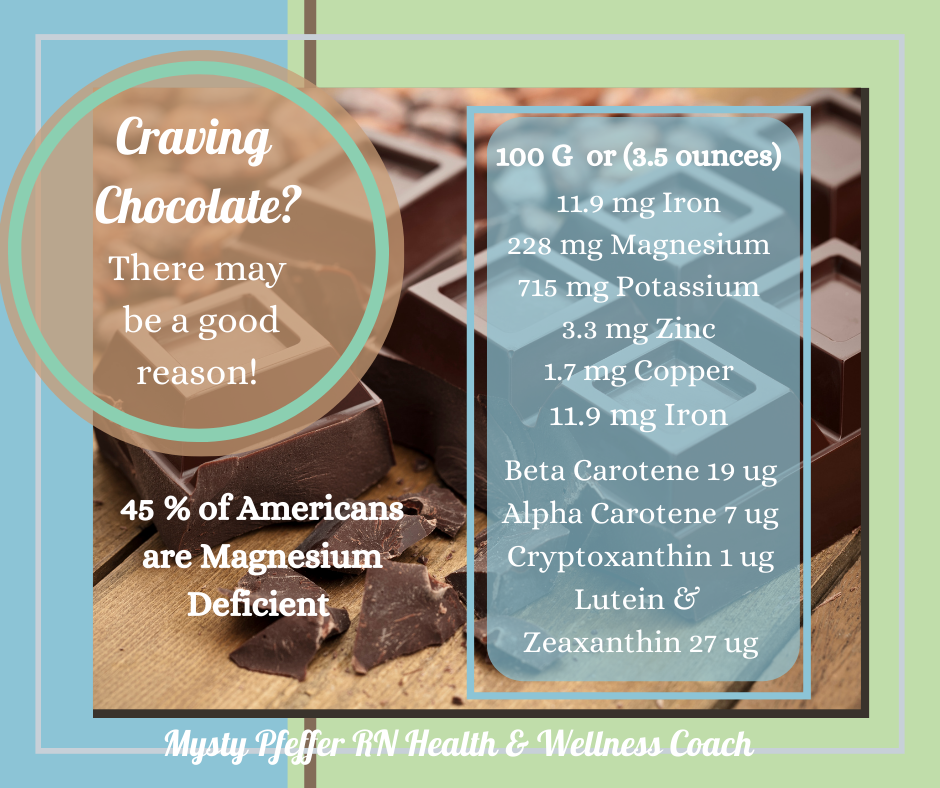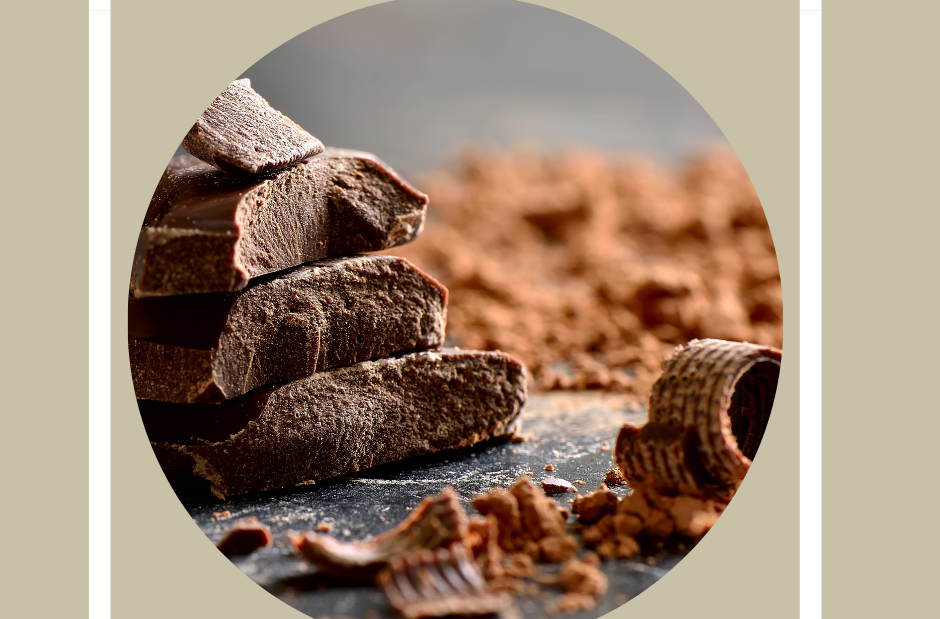The question I often ask myself, “Will my chocolate craving ever go away?” came day 8 of our 40 Days to Sugar Freedom fast from a lady wondering the same thing. It is a great question! One that has me thinking about the intrinsic reward of chocolate, and its potential health benefits.
I assume, of course, it must be meeting a need at a deeper level than pleasure.
Let’s face it, for those of us who stuck our fingers in a tub of cocoa while we were kids and placed it on our tongues with great anticipation learned very quickly; without the sugar, this stuff is awful!
In shocking disappointment, the bitter reality of chocolate’s delight comes crashing down.
Oh, but add that sweet white stuff and it is game on! I will also say, even addictive.
So, for us die hard chocolate fans, learning to like it with the minimum amount of sugar is key.
But why do we crave chocolate so much?
Although there are many possible reasons both intrinsic and extrinsic, let’s explore some basic biological principles in light of what we see in our environment today.

Experimental food studies show cravings can be a conditioned response and therefore, can be reversed. According to these researchers the short-term avoidance of a particular substance increases cravings, whereas the long-term removal diminishes them. (1)
So, it appears to be a matter of time. The hedonic (or reward system) is associated with dopamine receptors and increasing pleasure. The bible has clear reminders about this type of behavior:
“I said in my heart, “Come now, I will test you with pleasure; enjoy yourself.” But behold, this also was vanity.”
Ecclesiastes 2 ESV – The Vanity of Self-Indulgence – I said – Bible Gateway
Clearly, pleasure and joy associated with any material thing is to be questioned and cautioned. However, I still wonder about the needs of our cells that go beyond temporary enjoyment and how mineral deficiencies “could possibly” drive our need.
A Possible Magnesium Deficiency May Play a Role in Chocolate Craving
First off, according to PubMed, 45% of us are magnesium deficient (2). There are a number of reasons why Americans are deficient, but the two main reasons are processed food and soil depletion.
It is estimated that vegetables grown today have 80-90% less magnesium than they did 100 years ago! Although, farming practices have improved to reverse this matter, since 2000, that is still a big deal, and difficult to replenish.
Furthermore, the article states processed food (which refines and depletes the original food item to a pale and deficient counterpart) interferes with magnesium’s absorption in the body (2). One of the hundred reasons for you and I to eat whole food, all the time.
Magnesium is important for transporting calcium and potassium, cell stability, DNA repair and function, heart health, and energy metabolism.
Are cravings, weight loss problems, and disease connections with lifestyle and ultra-processed foods starting to make sense now?
I hope so!
You and I need to 3.6 mg/kg of magnesium a day to maintain balance and not be deficient.
A pound of body weight equals 2.2 kg, so divide your weight by 2.2 to find your bodyweight in kilograms and multiply it by 3.6 to find a “general” amount of magnesium you need per day.
Keep in mind this is a general number and varies based on activity (or lack thereof), perspiration, illness, or the body’s ability to absorb nutrients.
According to the USDA good sources of magnesium are:
- Leafy greens (78mg/serving) (I’m taking an educated guess that common purslane and wild violets in your back yard are better sources!)
- Nuts (80 mg/serving)
- Whole grains (46 mg/serving)
- Chocolate (228 mg/3.5 ounces)
- Beans & Legumes (varies 40-60mg/1/2 cup)
- Bananas (32 mg/banana)
- Peaches
- Figs
- Prunes
- Seeds (pumpkin 150 mg /ounce, chia (111mg/ounce)
- Avocados (58mg/ounce)
God knows what you and I need before we need it and He placed everything in the garden and the soil (of your own back yard) to make sure we have it. A gift that is for our good and His glory.
Is It Possible More than One Deficiency in Minerals Contribute to Chocolate Craving?
The second highest mineral we lack is iron. The recommended daily amount for women and men is 8mg per day. Blood loss from a traumatic injury, endurance sports, long-term use of aspirin or nonsteroidal anti-inflammatories, plus heavy menstrual cycles in women can contribute to the problem. (3)
If bleeding is not an issue, there may be intestinal problems with absorption of iron in the gut. Celiac disease, Chron’s, Ulcerative Colitis, and Helicobacter Pylori can inhibit mineral absorption in the colon.
Therefore, it makes sense poor uptake of necessary minerals leaves our cells craving more!
Three ounces of dark chocolate or cocoa has 11.9 mg of iron. Although our brain may not connect the deficiency to the amount minerals in in our favorite snack, I’d say our cells know.
It’s a total guess on my part, but when tastes receptors in the oral cavity activate afferent nerves in the brainstem I begin to wonder. (4) The information pathway travels through the rest of the brain and communicates with the nerve pathways and homeostatic processes throughout the body. (4)
Wouldn’t it be cool if the brain see’s chocolate and the salivary glands stimulate this neurogenic pathway and get the cells excited for the minerals coming?
It might be a leap, but if God can create a dog to sense when a seizure is coming on in its master, it’s not much of a stretch to believe He trained tastes and memory to recognize a good source of necessary minerals when they’re present.
Time and research may eventually reveal all we need to know, but in the meantime the best practice to avoid chocolate cravings is the same:
- Drink plenty of water.
- Meet the needs of the cells with nuts, seeds, quality protein, fruits, vegetables, and leafy greens.
- Eliminate processed foods that diminish mineral absorption.
- Utilize distraction methods when temptations are near. For instance, go for a walk, pray, or think about how the item makes the joints or muscles ache.
I am here for you and have adapted some sugar free chocolate recipes for you! If you need a RN Health & Wellness Coach you know where to find me! I look forward to serving you.
References:
Meule A. The Psychology of Food Cravings: the Role of Food Deprivation. Curr Nutr Rep. 2020 Sep;9(3):251-257. doi: 10.1007/s13668-020-00326-0. PMID: 32578025; PMCID: PMC7399671.
Workinger JL, Doyle RP, Bortz J. Challenges in the Diagnosis of Magnesium Status. Nutrients. 2018 Sep 1;10(9):1202. doi: 10.3390/nu10091202. PMID: 30200431; PMCID: PMC6163803.
Micronutrient Facts | Nutrition | CDC
Anemia – Iron-Deficiency Anemia | NHLBI, NIH
Vincis R, Fontanini A. Central taste anatomy and physiology. Handb Clin Neurol. 2019;164:187-204. doi: 10.1016/B978-0-444-63855-7.00012-5. PMID: 31604547; PMCID: PMC6989094.






